Recirculating Aquaculture Systems
The function of modern land-based intensive mariculture systems is enabled through recirculating systems. Aquaculture has always been based on flow-through technology. This implies that the water inlet and outlet are opposed to each other, allowing the development of aquatic organisms in outflows of controlled velocity. Such systems process the water only once, so as to later release it into the receiving water with or without any further processing. Recirculating Aquaculture Systems are closed or partially closed systems. In these systems, the effluent water waste from the system is processed and re-diffused in the system in order to be re-used.
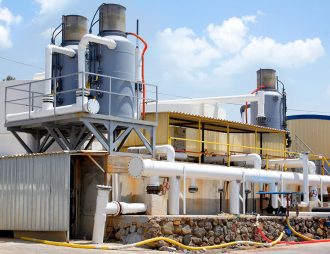
It is often the case that a relatively minute part of the actual culture medium is exchanged per unit time. Such systems may also be called Recirculating Aquaculture Systems (RAS). It is expected that the introduction of aquaculture recirculating systems in a highly competitive commercial aquaculture will rise in the future in an attempt to conform to the water waste restrictions that are applied in the field.
Aquaculture Recirculating Systems are generally structures that put together tanks for fish maintenance and a composite system for water processing. The water in the tanks is renewed frequently; usually every few hours. It is a necessity, since an important stocking rate and potential toxic waste products like ammonia may be detected. The usual process implies that the water is poured into the tank at the top, which makes the water to move in a clockwise rotation around the tank and it drains constantly through a central drain at the bottom. The purpose of the water processing is to remove waste and add oxygen before it is re-used in the tanks. A total of 95% of the water is recycled by the Efficient Aquaculture recirculation systems, therefore, there is a constant need of fresh “new” water supply.
RAS Operation
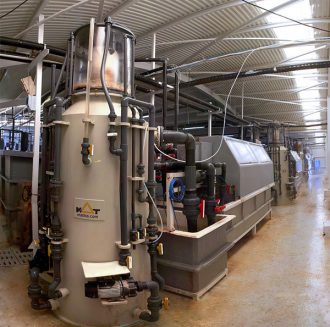
The Aquaculture Recirculating Systems are based on some water pre-treatment (bio-filtration, oxygenation, sterilization). Water is supplied through the culture tanks under continuous aeration. Then, the water flows through a hydrozyclon or other mechanical filters which remove larger particles like food leftovers, excrement and sediment. Next, the water flows through a biofilter and a protein skimmer. The biofilter helps remove metabolic-by products like ammonia. Such biofilters contain ‘media’ of a large surface area, like silica sand or special plastic rings which render a substratum of ammonia-scrubbing bacteria (Nitrosomonas, Nitrobacter).
The bacteria into biofilters are divided into two groups: the bacteria that digest organics and the bacteria that convert toxic ammonium into nitrate. The first group grows much faster than the ammonium reducing nitrifying bacteria. In case the organic load on the biofilter is excessive, then the heterotrophic bacteria that decrease the number of the organics would misplace the nitrifying bacteria from the filter. However, the mechanical filtration removes solids efficiently and minimizes the dissolution of particles, thus minimizing the organic load. This allows for the nitrifying bacteria to be developed and for the performance of the biofilter to be maintained. Additionally to the removal of organic compounds and ammonium from the recycled water, the dripping water flow into the biofilters also decreases the excess of carbon dioxide.
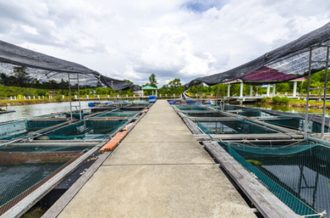
When a protein skimmer is in operation the water to be treated is mixed vigorously with injected air or liquid oxygen in order to extract proteins from the water column. Part of the water can be disposed, but the main part is re-circulated back into the culture tanks. Processed clean water is added later to the recirculated stream.
When Ozonisation is in operation within a protein skimmer, any remaining organic waste that cannot be dissolved via the biofilters are cracked up directly by its oxidization properties. Moreover, pheromones that could seriously influence the development of fish are cracked up by ozone.
Recirculation Aquaculture System are indoor land-based fish farms based on the monitoring and delivery of fish on a yearly basis. The principles are the same, no matter whether the RAS installation will use fresh water, marine or brackish water. The R.A.S. can achieve optimal and stable temperature and production all year round, regardless of climate change, environment conditions, seasonal variation or location.
Recirculating Aquaculture Systems Advantages
- There is a stable production of high quality fish all year round.
- It requires low water.
- The production of quality fish is high, in a relatively restricted space.
- The risk of diseases is reduced.
- Low mortality rate.
- There is continuous control and monitoring of the system.
- It does not affect the environmental in any ways.
- Intake and effluent is reduced to the minimum.
- There is special treatment of water disposal.
Recirculating Aquaculture Systems Disadvantages
- It depends on regular power supply and control.
- A need for start-up capital for premises, technical installation and running cost is necessary.
Applications of Recirculating Aquaculture Systems
The concept of our company is based on our long experience providing Recirculating Aquaculture Systems for facilities such as caviar farms, tilapia farms, salmon farms, shrimp farms, marine water hatcheries and feed mills. The main applications of Recirculating Aquaculture Systems consist fish production units of several different kinds of warm and cold fresh and saltwater species:
Freshwater Fish Aquaculture Production
- Salmon smolt
- Trout
- Sturgeon
- Barramundi
- Pike Perch
- Murray Cod
- Eel
- Tilapia
- White fish
- Ornamental fish
- Carp
- Catfish
Saltwater Fish Aquaculture Production
- Salmon
- Sea Bass
- Sea Bream
- Cod
- Turbot
- Yellowtail Kingfish
- Cobia
- Grouper
- Snapper
- Sole
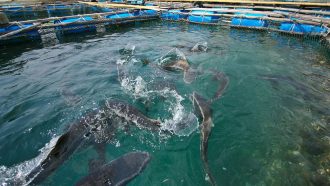
Fish Farm: We provide practical solutions to fish and shrimp farmers to help them tackle concerns like: issues relating to pond preparation and productivity, natural food management, water and sediment quality, intensification system, biosecurity, nutrition and feed management and RAS.
Hatchery: We provide biosecurity maintenance for broodstock and hatchery facilities, R.A.S., feed additives and natural health solutions for fish and shrimp broodstock and larvae. We focus on feeding and health of aquatic organisms, all environmentally friendly and highly beneficial to fish.
Feed Mill: Our aquaculture consultants provide assistance to feed manufacturers to make profit relating to feeds production, like environmental or safety issues, supplies and costs.
Commercial Aquaculture: Solutions & Troubleshooting
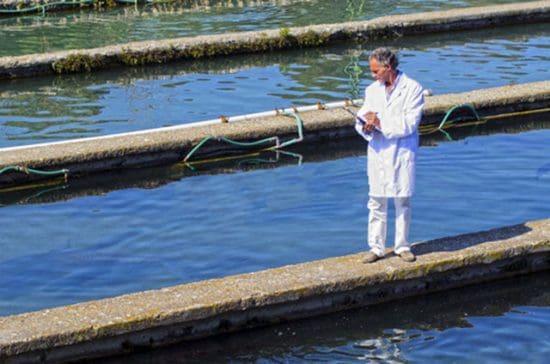
Our company can also troubleshoot problems with existing systems and offer scientific and technical solutions as well as biological and engineering information to support any need relating to aquaculture. Moreover we can assist on:
Oxygenation: Maintaining optimal dissolved oxygen levels in your water is extremely important. It provides a healthier environment for the fish.
Water Quality and Movement: Dissolved oxygen and temperature, are indicators of utmost importance for the water-quality throughout the fish life cycle.
Solids Removal: Drum screen filters are proved to be highly efficient and reliable in removing solids from both large and small volumes of water.
Monitoring and Control: Facilitate the procedure of ensure optimal water conditions for your aquatic livestock.
Influent Treatment: Such a treatment ensures that the incoming water -whatever the source, municipal, surface, groundwater or other- is safe and healthy for your fish.
Gas Balancing: Sustaining proper gas balance is vital to the health of your fish.
Effluent Management: Environmental restrictions may shape the way aquaculture operations deal with the effluent that is disposed back into the environment.
Disinfection: Protect your fish by ensuring that the processed water is adequately disinfected before returning it from your filtration system.
Biofiltration: The buildup of ammonia nitrogen that results from fish metabolism may constitute a challenge to the agriculturists. Biofiltration is important to maintain water quality that keeps keeps aquatic species thriving.
